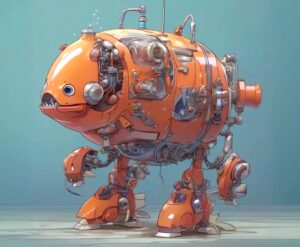Towards an Era Where AI Nurtures AI: The Potential of the Darwin Gödel Machine
Hello! I’m Tak@, a system integrator constantly exploring the possibilities of generative AI.
Today, I’ll take a deep dive into an astonishing technology that allows AI to evolve autonomously—the Darwin Gödel Machine (DGM)—its potential, how it works, and what the future might hold.
What Does It Mean for AI to Improve Itself?
Imagine an AI that, like humans, thinks for itself, acts on its own, and continuously improves—what kind of future would that create? The Darwin Gödel Machine (DGM), developed by Sakana AI, is a groundbreaking step toward realizing such an AI.
Traditional AI typically operates within predefined structures, performing tasks designed by humans. While this approach has brought remarkable advancements, DGM takes it further. This AI rewrites its own code, continually refining itself—like a living organism adapting to its environment through evolution.
The concept of a "Gödel Machine" has been around for years—an AI that mathematically proves each modification will lead to better results. However, this approach has always been impractically difficult. DGM overcomes this limitation by making improvements through empirical evaluation rather than requiring pre-approved mathematical proofs. It operates much like a scientist: forming hypotheses, testing them through experiments, and building knowledge over time.
How Self-Correction and Knowledge Accumulation Work
DGM’s self-improvement follows a cycle:
- It selects an existing AI agent and modifies its code.
- It creates a new AI agent based on this modification.
- The new AI agent is evaluated through real-world programming tasks.
If the modified version performs better, its improvements are stored as knowledge, which can be used in the next iteration of self-improvement.
An essential part of this process is the Archive—a repository where all generated AI agents are stored. Unlike typical optimization methods that focus solely on short-term gains, DGM preserves interesting agents, even those that might not be immediately perfect. This approach supports open-ended exploration, leading to unexpected breakthroughs.
How Much Has DGM Actually Improved?
DGM’s ability to enhance itself is backed by impressive numbers:
- In SWE-bench, a benchmark for programming task solutions, DGM’s performance increased from 20.0% to 50.0%.
- In the Polyglot coding benchmark, its effectiveness improved from 14.2% to 30.7%.
These improvements aren’t just the result of repeating the same methods. DGM significantly outperforms AI models that lack self-improvement mechanisms or open-ended exploration capabilities. Furthermore, the advancements discovered through DGM can be applied to other large language models (LLMs), demonstrating its high versatility.
New Abilities Gained Through Self-Improvement
DGM didn’t just improve performance—it also developed entirely new capabilities:
- Advanced Code Editing Tools: DGM built its own enhanced tools, allowing more precise control over code modifications.
- Long-Context Understanding: It improved its ability to comprehend large-scale projects, retrieving necessary information more efficiently.
- Reliability Features: DGM introduced patch validation and retry mechanisms, ensuring more trustworthy code modifications.
These upgrades resemble how a craftsman refines their tools or how programmers develop better debugging techniques over time.
A Future Where AI Thinks for Itself?
DGM represents a vision where AI is no longer just a tool but a scientific thinker—setting its own research goals, conducting experiments, and accumulating knowledge.
However, such self-evolving AI also requires robust safety measures. DGM’s development incorporates safeguards like sandbox testing and human oversight. As AI evolves, the key question will be: how do we coexist with AI and ensure its advancements benefit society?
The Darwin Gödel Machine is a major step toward AI that learns and grows autonomously. The future may reveal AI evolving in ways we never imagined—creating entirely new forms of intelligence.
Let’s watch this evolution unfold together.



